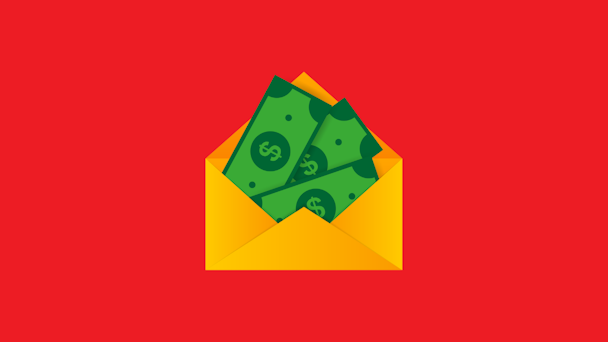How loyalty schemes can reward for much more than spend
Dom Winchester, strategy director at Nectar360, explores the psychological quirks that make for the best retail loyalty schemes.

When I was a child, my father used to offer me cash if I got good grades. Other relatives disagreed with this incentive program - or “bribery,” as they called it. They felt I should be working hard because I wanted to, in the (supposedly perfect) knowledge, that good grades would help me progress to a good senior school and then a good university.
This was an early introduction to loss aversion: he told me how much I would get for an A or B grade in each subject, so achieving anything below that would feel like a loss of that cash. Unsurprisingly, I agreed to this deal that would last until the age of 17, creating an extra reason for me to ignore childish distractions and further my academic career.
Advertisement
Fast-forward fifteen years, and Nectar launched in 2002 with a “points for pounds spent” reward, which has formed the core of the customer proposition ever since. Our coalition partners issue points to their customers, and the resulting uplift in (or retention of) spend resulting from this investment is measured.
But over the intervening years, many of our coalition partners discovered that Nectar points could also be offered as bonuses to drive non-transactional behaviors, including:
-
Switching to Direct Debit or choosing paperless billing
-
·Completing surveys or watching a video
-
Downloading an app or linking accounts
-
Entering a competition (to win points)
Some of these behaviors are one-off, some are occasional, but they all drive benefit to the business that chooses to incentivize them - either directly in the form of reduced cost-to-serve or indirectly through making the customer more engaged and accessible. They also benefit the customer by boosting their points balance without additional spend, helping them towards their next meaningful points redemption experience.
Advertisement
Many businesses have followed a similar trajectory, but more recently, we see that some have moved beyond rewarding non-transactional behaviors that benefit their business to rewarding behaviors that benefit the individual personally, their immediate community or the wider environment. In other words, they encourage their customers to “do the right thing.”
Encouraging people to make better choices relies on a careful balance of four components:
-
Motivation - an intrinsic desire within an individual to make a ‘better’ choice (for example, about their personal health, wealth or impact)
-
Information - data played back to the individual, helping them to understand their past and present choices, perhaps in comparison to other groups, areas or periods
-
Friction – removing the hassle and hurdles that may stand between the customer and them making the desired choice
-
Incentivization – extrinsic rewards based around a choice framework (do this, get that)
A business cannot instill intrinsic motivation in an individual, but it can offer information and incentivization while reducing friction. Four examples illustrate this approach.
Nutrition
The Great Fruit and Veg Challenge is an occasional campaign supporting Sainsbury’s's commitment to encourage customers to eat better. Over half a million customers take on the challenge, which uses Nectar points incentives to enable them to hit personalized targets based on the range and quantities of fruit and veg each customer typically buys. It combines the customer’s fruit and veg purchase history, real-time transactional tracking and a slick and tailored mobile app experience. This gamified approach is engaging and rewarding enough to gently but positively nudge the participant in the right direction.
Exercise
The Department for Health and Social Care and the City of Wolverhampton Council is trialing a ‘Better Health’ app designed to incentivize individuals to eat better and move more. To remove a barrier to participation, each participant is given a fitness wearable that tracks their activity levels. Points are earned and exchanged for food vouchers or gym pass discounts. The objective is to help overcome the current inertia to make healthier choices through the promise of immediate rewards (on top of future improved health benefits).
Conscious consumption
The recent spike in electricity prices helped focus the mind of cash-strapped households on how much power they were using and wasting, something the installation of smart electricity meters had hoped to achieve. Where this technology has come into its own has been to allow selected households to automatically earn rewards simply for shifting their power demand out of peak periods. The water industry is now starting to roll out its version of smart metering (supported by data playback capability), designed to engage households with their usage and wastage of water. As this technology rolls out, there may be an opportunity to similarly incentive demand shift and reduction.
These initiatives pose an interesting question: to what extent should individuals or households be incentivized to do what they (probably) know they should be doing anyway?
One can argue that doing the right thing brings its reward - in the examples above, these are better health and protection of scarce resources - plus a sense of quiet satisfaction at doing the right thing. But despite the efforts to reduce friction, each of these initiatives still requires the customer to do something, either once or repeatedly, and the reality is this friction is enough to deter many from making or sustaining the needed choices.
Rewards are therefore necessary to overcome this residual friction. This investment allows brands to build a deeper relationship with these customers. One that is also supportive rather than purely extractive.
Only rewarding your valued customers when they shop more and spend more with you may make sense from a short-term revenue perspective, but there is only so far you can stretch someone. Rewarding them for ongoing engagement with your brand is a better approach for the longer term. But supporting them as they strive to make those ‘harder but better ‘choices could help win you their loyalty for life.

